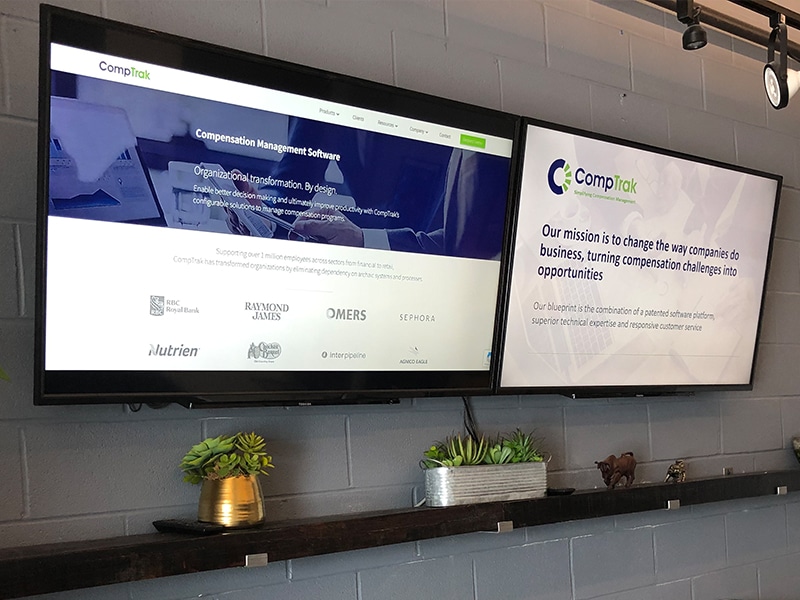With a whirlwind of factors at play, attracting and retaining talent remains a significant challenge for all organizations. Leading industry research papers state that over 50% of HR leaders expect increased talent competition in the near future. With increased competition, the organization’s total rewards package or more specifically the communication of the total rewards package will play a significant role in attracting and retaining top talent. With intense competition for qualified workers, HR departments are under heavy scrutiny and must adopt innovative approaches to total rewards offerings in order to differentiate themselves in the job market.
What are total rewards?
Understanding total rewards
Total Rewards is the entire package of monetary and non-monetary benefits the employee receives from an organization. In addition to cash compensation, total rewards also include benefits such as health insurance, retirement plans and paid time off, as well as non-financial rewards such as career development opportunities and flexible work arrangements.
For an organization, Total Rewards is an important strategy to help drive employee motivation and retention. According to a survey by the Society for Human Resource Management (SHRM), employee benefits are the second most important factor in job satisfaction and form an important factor for enhancing the employee experience.
The emphasis of employee experience has exploded in recent years. Before the pandemic only 52% of surveyed organizations focused on enhancing employee experience whereas a startling increase has been observed among employers (92%) post pandemic. By effectively communicating cash compensation, benefits and perks, recognition, and development, businesses can show their employees that they are valued and that their contributions are recognized.
Common components of a total rewards package
While the components can vary depending on organization and industry, a total rewards package typically includes a combination of financial and non-financial rewards and benefits.
- Base pay: This refers to an employee’s fixed salary or hourly rate.
- Variable pay: Bonus, incentives or commissions are a form of variable pay dependent on individual’s or company performance. Recognitions in the form of awards and promotions are also key in morale engagement.
- Health, wellness, and retirement benefits: Employee benefits can include medical, dental, and vision insurance, and wellness programs like gym memberships. Pensions, 401(k) plans, and other savings plans are also included.
- Time-off benefits: These benefits include paid days for vacation, sickness, bereavement, or simply personal days off work. Maternity and paternity leaves are also benefits designed to keep employees happy and productive.
- Flexible work arrangements: Various perks such as work-from-home or flexible work schedules ensure trusting employees instilling a sense of belonging.
- Career development opportunities: Professional development programs include offering trainings, tuition reimbursement, and career advancement opportunities to employees to cultivate loyalty.
Importance of effective communication
Often employees mistakenly view their fixed salary and variable pay as the sole measures for total rewards. In reality, employers invest significant resources into providing benefits and other programs that can add substantial value to the employee’s overall compensation package. Many employees often underestimate or don’t understand the true value of their total rewards. It is believed 49% of millennials and Gen Z plan to leave their jobs within two years for reasons primarily related to compensation.
With little to no visibility into the actual monetary value of these programs, a majority of employee turnover for salary increase reasons fail to understand the full extent of total rewards being offered.
Thus effectively communicating the full value of total rewards is important not only for employee engagement and retention but also to attract new talent. Total rewards programs can help employers differentiate themselves in the competitive job market and create a positive employer brand that attracts top talent. From an employee’s perspective, total rewards are important to make them feel valued and appreciated. When employees receive rewards and benefits tied to company performance, they are more likely to be engaged and motivated in their work. This can lead to higher levels of job satisfaction, better performance, and a lower turnover rate. Additionally, total rewards programs can help employees feel supported and secure in their financial and personal lives, which can reduce stress and increase overall well-being.
Challenges of communicating total rewards
Industry survey shows 89% of HR professionals are prioritizing improvement to total reward packages in 2023, but still many businesses struggle to get their message across. Some of the challenges businesses face include:
- Complex or technical language: Total rewards can be difficult to explain, especially for employees who are not familiar with compensation jargon. Above all communication, and information overload can leave employees feeling confused and undervalued. Thus, key is to keep communications simple and concise.
- Communicating across different employee groups: Different employee groups may have different needs and preferences when it comes to total rewards. For example, younger employees may be more interested in career development opportunities, while older employees may place greater value on retirement benefits. Customised communications are essential to keep all employees happy.
- Lack of transparency: Employees may feel undervalued if they don’t have a clear understanding of their compensation package. Businesses that don’t provide transparent information and open communications about total rewards may lose employee trust and loyalty. Especially change management paralyzes employees with too much information creating an environment for employee skepticism and distrust.
- Keeping up with changing regulations: Total rewards are subject to regulations at both the federal and state levels. Businesses that don’t stay up-to-date on changes to these regulations may provide inaccurate or outdated information to their employees.
To overcome these challenges, businesses need to develop effective communication strategies that are tailored to their employees’ needs and preferences.
Best practices for communicating total rewards
To effectively communicate total rewards to employees, businesses should follow these best practices:
- Introduce it during onboarding process: Total rewards should be introduced right from the beginning of an employee journey to make sure they are aware of the programs, benefits, and options on offer.
- Use clear and simple language: Clear and concise explanations of components help employees to understand total compensation easily. Avoid using jargon or technical terms that may be unfamiliar to some employees.
- Self-serve communication channels: Employees will have different preferences when it comes to retrieving and viewing information about total rewards. Provide a fully mobile responsive self-serve portal that all employees have access the information when they want, with the device they want
- Highlight all aspects of your program: Total rewards isn’t just about the monetary components. Most organizations offer softer perks and benefits that cannot be monetized. Employees may not be aware of those programs and opportunities so it’s important to include them when talking about total rewards communications
- Use visual aids and interactive tools: Charts, graphs, and other visuals in total reward statements can help employees understand their total compensation package more clearly. Interactive tools make the information more accessible and easier to understand helping in improving employee experience.
- Personalize the Statement: Many forward-thinking organizations tailor the statement to each employee’s needs and interests to engage employees more effectively. For example, if an employee is planning to start a family, highlighting the family benefits included in their package can be particularly impactful.
- Communicate regularly: Don’t wait until the end of the year to communicate total rewards to employees. Regular customized communication can help to build trust and increase job satisfaction whether it’s through an annual statement or more frequent check-ins. Also, regular updates to statement reinforces total rewards on an ongoing basis.
- Be transparent: Employees want to know what they’re being paid and why. Open and transparent discussions around total rewards can help build trust with employees and increase their job satisfaction. If your company offers a competitive package, highlighting this in your statement can be a powerful retention tool.
Elevating your total rewards program to the next level
Calculating and summarizing the value of all the components of total compensation per employee can get complicated despite proven templates. For enterprises this regular upkeep of statements and frequent communications manually can get challenging, especially for larger organizations. This is where an online Total Rewards Statements solution can help. Here are some ways to enhance total rewards programs:
- Customize total rewards packages: One of the benefits of using a total rewards solution is the ability to create customized and personalized total rewards packages for different employee groups. Personalized experiences incorporate individual’s performance, tenure and other factors. This can help organizations better align rewards with specific job roles and performance levels, improving employee engagement and motivation.
- Provide transparency to all stakeholders: An online solution that integrates all your various total rewards sources together can provide employees with greater transparency into their compensation and benefits, allowing them to understand the full value of their total rewards package anytime and from any device. This can improve employee satisfaction and reduce turnover.
- Analyze compensation data: By analyzing compensation data, organizations can identify trends and patterns in employee compensation, such as pay disparities or performance-related bonuses. This can help organizations make more informed decisions about compensation and rewards programs.
- Ensure compliance: A focused software can help organizations stay compliant with regulations and industry standards related to compensation and benefits. This can help reduce the risk of legal and financial penalties, while also promoting fairness and equity in compensation practices.
- Visibility and Reporting: Aggregation of fragmented systems and multiple sources of data under one platform empowers administrators with macro and micro visibility into the compensation structure. Successful data models/ implementations allow businesses to track performance and make data-driven decisions.
- Scalability: The growing modifications in benefits and perks can get complex as an organization grows and evolves over time. The widespread use of cloud solutions in total rewards allow to prioritize for scalability.
How can we help?
Organizations are increasingly focusing on achieving operational excellence and to realize their business goals are actively attracting and retaining top talent. In this effort creating and managing a successful total rewards program is essential to serve as a competitive differentiator and embrace rising worker influence. Creating bespoke statements catering to unique clusters of employees is nothing short of HR function’s reinvention. Taking cues from marketing principles for personalization, technology for sure remains the enabler for creating individualized employee experiences without adding administrative burden.
CompTrak’s dynamic Total Rewards Experience has allowed countless global organizations to get ahead in the talent war with personalized total rewards statements. For more information about how we can help your organization better engage and reach your employees, request a demo here with one of our consultants.












